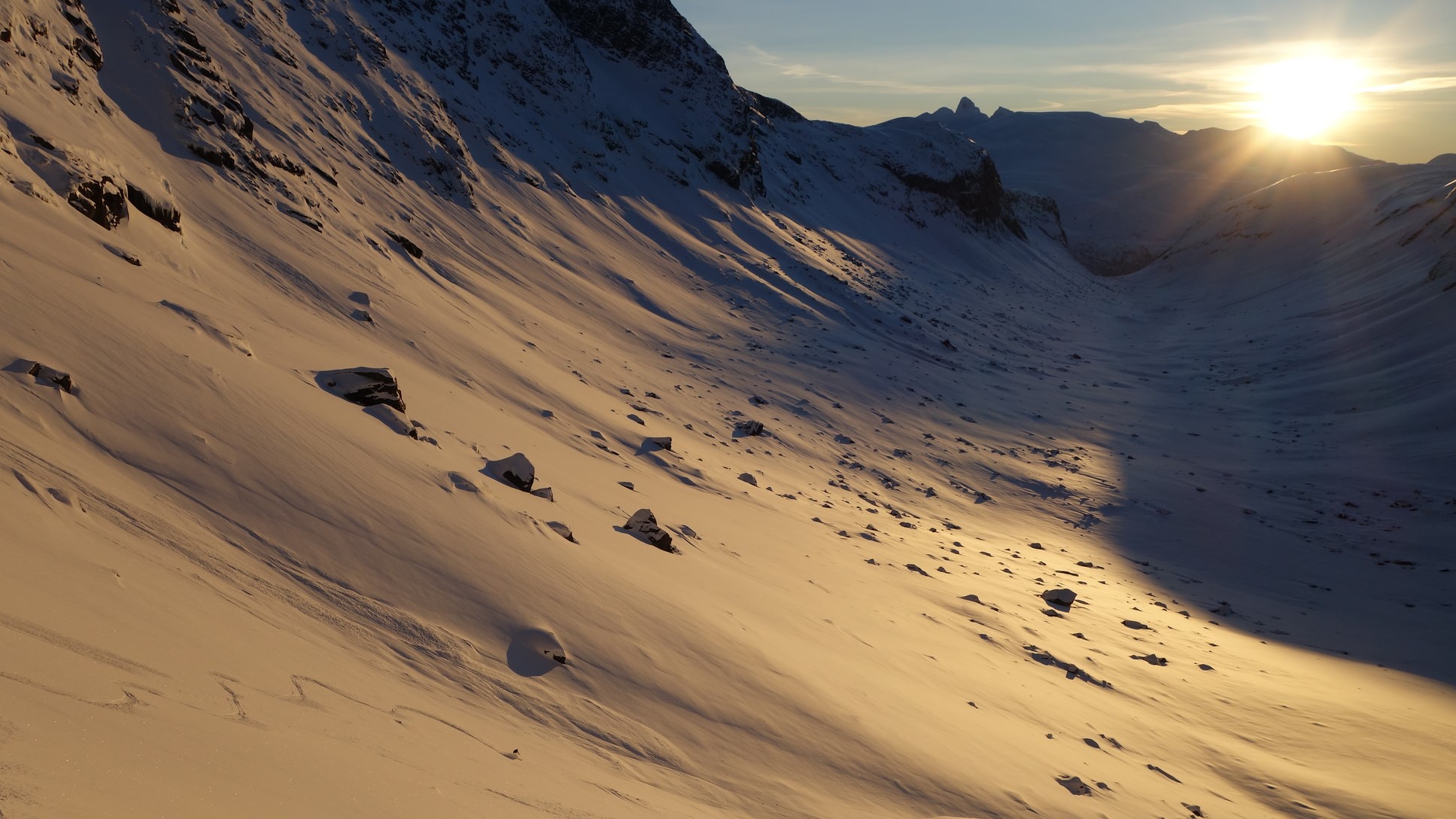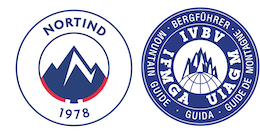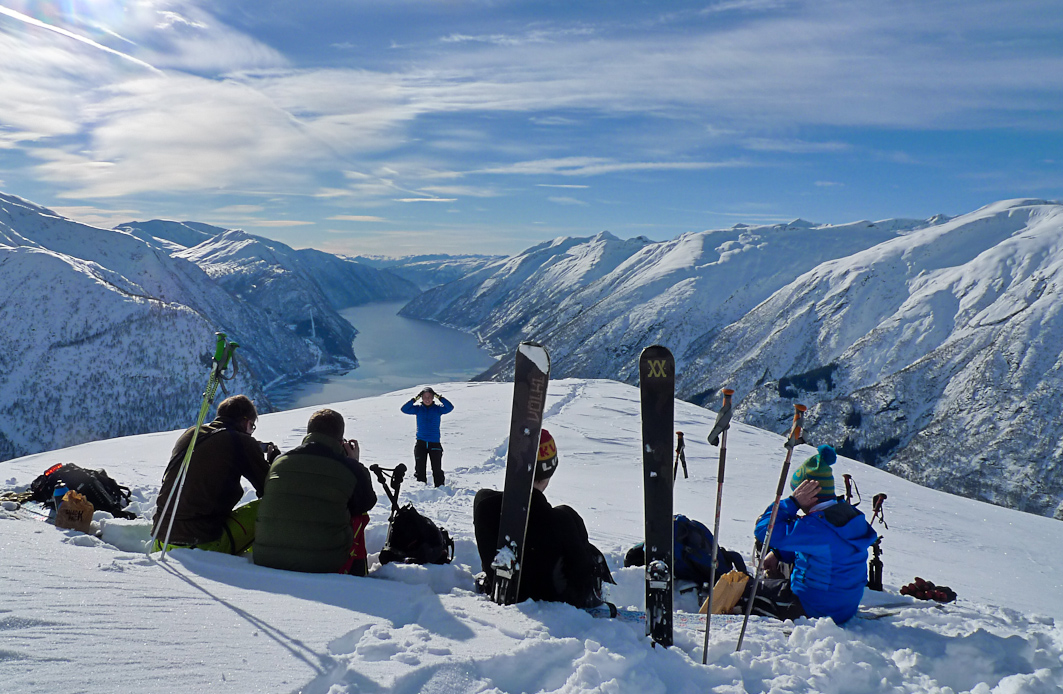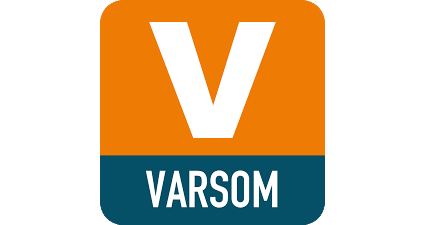International guide meetings in Lyngen
Norwegian Established Guiding Practices
Information for visiting guides to Svalbard
Introduction
Norwegian mountain culture is based on the principles of leave no trace and the nature own dignity. Our members base their work on these principles. We welcome all foreign colleagues to work in our mountains and strongly urge all to respect and pass these principles forward to their guests. Leave no trace and respect the wildlife and flora.
The Norwegian climbing culture and ethics are based on the same principles. There is a «no bolt» ethic in the mountains and we have a long tradition for «clean» climbing. We encourages all visiting guides to follow this ethic and ask Nortind for advice before any bolts or permanent installations are established.
Most of our ski and climbing tours require to park and hike over private land. To keep a good relationship between landowners and skiers/climbers please follow the advices in the guide book, ask for permission, and/or ask the local mountain guides for advices.
Mountain guiding is not a regulated profession in Norway, and with an exception for Svalbard, there is no duty of making notification or seeking permissions.
Applications for ski guide and IFMGA mountain guide training programs 2025
The deadline for applying for admission to the Norwegian ski guide and IFMGA mountain guide training programs is 15.03.2025. Application forms for the training programs are available here (Norwegian). NB! our program is offered in Norwegian only and students must be fluent in Norwegian (level B2), or another Scandinavian language.
International guide meetings in Lyngen spring 2025
We hope to establish a sharing culture and a friendly atmosphere where all certified guides can participate.
Find out more, and join the meetings at www.guidemeeting.no
The guide meetings are a part of a collaboration project between the Norwegian Avalanche Forecast Varsom, the tourism industry, the police, CARE, and Troms county. The goal of the project is to reduce avalanche accidents.

Norwegian Established Guiding Practices
Nortind’s guiding culture is based on the Norwegian outdoor tradition, national and international standards. These are the standard that Nortind strongly recommends.
Ski touring:
6 guests pr. guide
Nordic skiing:
6-8 guests pr. guide
Rock climbing and alpine climbing:
1 guest pr. guide, long and complex climbs
2 guests pr. guide, most routes
3 guests pr. guide, short and/or tours with little climbing
Glaciers:
6 guests pr. guide on complex tours
Please contact us for help or assistance in an emergency or challenging event!
President: Halvor Dannevig +4797676397
Or
Vice President: Hans Christian Wilson (which also speaks French) +4799105958
Avalanche forecasting
The Norwegian avalanche forecasting service is "Varsom" . Forecasts are published 4:00 PM every day from 1st of Dec to 31st of May. There are different regions all over Norway and they will differ in size. Most of them are quite big compared to European forecasting region so you need to evaluate the local conditions and weather to get a precise situation awareness.
Avalanche forecast, maps and recent observations is located here:
Varsom has its own free app where you have access to avalanche terrain maps in high resolution, forecasts, ability to see and register register avalanche-, snow- and weather observations and incidents.
NB: If you trigger an avalanche, you should register it in the Varsom app. That way, unnecessary search and rescue operations might be avoided.
The Varsom app is available for iPhone and Android.
Emergency and Rescue
Emergency information sheet for visiting guides
Search and Rescue (SAR):
Call 112
Medical situation that don’t require rescue:
Call 113
Fire:
Call 110
The police is responsible for all SAR operations in Norway. They alert the different resources depending on the situation. If the situation requires specialists like helicopter and/or volunteers, will the mission be handed over to the Joint Rescue Coordination Center for coordination and control.
All rescue in Norway is free of charge,but its still important not to take advantage of the system if the situation can be solved on site.
Rescue helicopters
The rescue helicopters are operated by the Norwegian Air Force. Its a quite big helicopter (SAR Queen AW 101) and are located at seven different bases (Banak, Tromsø, Bodø, Ørland, Florø, Stavanger and Rygge). They are all equipped with a hoist and will require a big landing area. Be aware of the downwash.
Ambulance helicopters
These helicopters are mainly used as an ambulance but has the capacity to conduct SAR missions in the mountains (helicopter models are AW 139, Airbus H135 and H145). They are smaller than the rescue helicopters and generally don’t have a hoist. The ambulance helicopters can still conduct SAR missions in steep terrain with a fixed line. Their night and weather capacity is more limited than the rescue helicopters.
Alpine rescue groups
The alpine rescue groups, consisting of volunteer climbers, are an important resource in the Norwegian SAR system. Volunteers specialists will conduct rescues of climbers and in avalanches. They are not part of the professional rescue service (but cooperate with them), and will not be on alert like the professionals. Their response time will be longer and depending on the location of the accident/incident.
In general the response time for SAR missions will be longer in Norway than Europe. The long distances and unpredictable weather will often result in a minimum of 1 hour waiting or longer if the mission has to be conducted on foot. Be prepared and equipped so you are able to handle a situation.
Other resources
Weather
Maps
All public maps are available online and can be downloaded free of charge. Here are some of the resources:
https://www.kartbutikken.no/norge-serien
Guidebooks
Skitouring :
https://www.ffshop.no/topptur-c-14_49.html
Climbing/mountainering
https://www.oslosportslager.no/produktkategori/klatreforere-klatreboker-4-2551.aspx
https://www.vpg.no/avdelinger/produkter/klatring/f%C3%B8rere-og-b%C3%B8ker/klatref%C3%B8rere-innland
Information for visiting guides to Svalbard
This summary is extracted the Svalbard / Polar Guiding article (2023 update) in the IFMGA Trekking and Expeditions Manual Appendix, page 139. Details on flora and fauna, sea ice, glaciers, weather, rescue and other resources for on guiding in Svalbard are included in the full article. This summary provides only an overview on Regulations and Requirements.
NB - new tourism regulations is entering force from 2025, read more here
Governmental Regulations
Tourism on Svalbard is regulated by the Svalbard Environmental Act and by the policies and procedures required for of tourism, fieldwork and other travel on Svalbard. The Governor of Svalbard – Sysselmesteren, oversees and administers the regulations. Guides entering Svalbard are obliged to comply with the regulations.
- All guided field parties must send in a notification of travel plans to Sysselmesteren no later than eight weeks prior to the planned trip.
- Sysselmesteren will establish a Search and Rescue (SAR) valuation amount based upon the type of activity, the geographical area you plan to use, your activity and the size of your group.
- Insurance coverage must be presented to Sysselmesteren on Svalbard before any departures or activity.
Mandatory Safety Equipment
Communication
- Insurance coverage must be presented to Sysselmesteren on Svalbard before any departures or activity.
- Satellite based emergency communication is required. An emergency beacon (PLB) that sends a distress signal and your location is obligatory. The identification (LC-) number of the PLB must be added to the notification. That gives the SAR operation an opportunity to obtain a better overview of the situation if when a PLB alarm is released.
- For better communication in the case of an emergency it is advisable to have a two-way communication. An Iridium satellite phone is recommended. A maritime radio is a valuable tool for direct communication with the rescue helicopter, especially in unfavorable weather when a landing is difficult. It’s possible to rent both satellite phone and PLB’s in Longyearbyen.
Polar Bear Protection
- Each group must have and carry at all times a rifle with a minimum of .308 caliber and a signal pistol with flares. The Norwegian Firearm Act applies to regulations for transporting, carrying and/or renting appropriate firearms.
- Comply with regulation details for firearms
- Anyone bringing firearms into Svalbard must have the appropriate paperwork and permits: Forms and Applications
- A Polar Bear Protection permit must be obtained in advance from Sysselmesteren through an application process that requires;
1) documentation that the applicant is proficient in handling a bolt action firearm
2) a police background check
3) a small application fee via wire transfer
- Exceptions apply for carriers of valid firearms permits or a valid European Firearms Pass.
- With either form of documentation, including a lending form, renting an appropriate firearm and ammunition is possible in Longyearbyen. Advance reservations from the local sporting shops are advised.
Mandatory Safety Routines
Sysselmesteren demand that you always practice routines for Polar bear safety, both during travel and in camp. You must send your companies written safety routines together with your application for your trip beforehand. The basic safety principles are to;
- Travel with the group tight
- Seek terrain with an overview
- Use your sight and binoculars for spotting
- Have a polar bear watch outside at all times in camp
- Guides sleep with clothes on and weapons in the tent with a plan for quickly getting in position if the watch spots a bear
- Smaller parties traveling inland can consider use of a trip wire for alarming a polar bear visit to camp, which gives the whole group an opportunity for sleep. However, compared to a woken watch, a trip wire is a much less reliable safety routine
Additional Safety Information
Tour Operator Regulations | Field Operations Regulations




